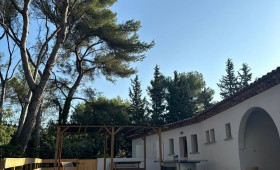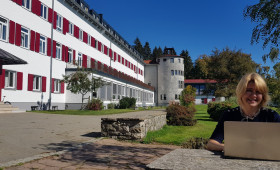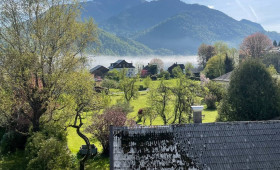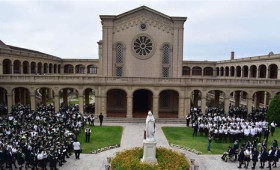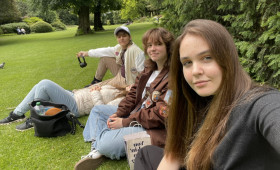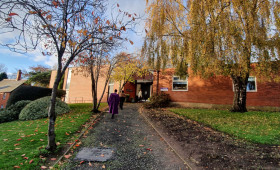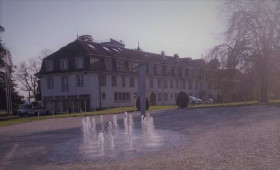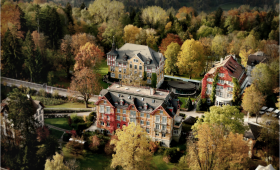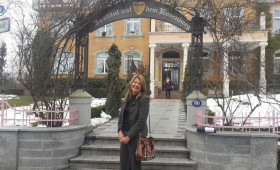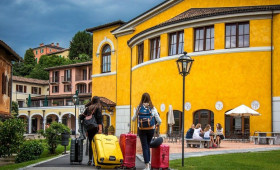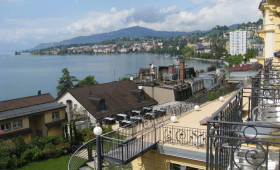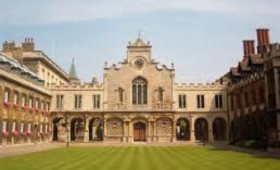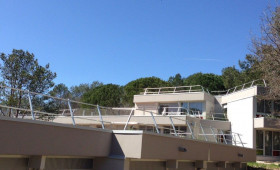Caxton College - British school in Valencia
03.10.172852
A trip to Caxton College, Valencia
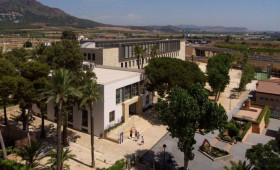 Polina's story about her experience at Caxton College impressed me so much that I decided to visit the school to feel the atmosphere myself. I made an appointment for Friday morning. Today is the end of January and the weather is very typical for Valencia. During the day, the air warms up to 20, at night about 10. It is very sunny and windy.
Polina's story about her experience at Caxton College impressed me so much that I decided to visit the school to feel the atmosphere myself. I made an appointment for Friday morning. Today is the end of January and the weather is very typical for Valencia. During the day, the air warms up to 20, at night about 10. It is very sunny and windy.
Today the wind is just stormy, the highway from Valencia to Pusol runs along the sea and I can hardly keep the car on the track. It takes 20 minutes to get from the center of Valencia, so many schoolchildren live in Valencia itself. In the morning, more than twenty large school buses collect children around Valencia and the suburbs and bring them to school for the start of lessons at 9:30. Those who live in Pusol itself are brought by their parents and host families.
Caxton College is a very modern and large school. Two buildings are located on the same territory: the primary school accepts the smallest children, the minimum age is one year! More than 2000 children study at the school at the same time.
I meet with Marilo, International Student Affairs Officer, and she takes me on a tour of the buildings, sports grounds, classrooms, and laboratories.
Near the building of the secondary school, she is happily greeted by a clearly Russian girl and Marilo introduces us. Tamara graduated from high school last year, she is a student at a private business school in Barcelona and came to Caxton to meet her friends. Tamara is enthusiastic about her experience at Caxton. She came from Russia and finished the last two classes at school. Upon arrival, she did not know Spanish at all, but she learned the language in six months. He says that when you live with a Spanish family, you have no choice and the language comes by itself. When asked what her general impression of Caxton was, Tamara enthusiastically replied that she adored this school and the two years she spent here.
We continue our tour, see the high school building, modern laboratories, and art studios. In the art class, we meet a teacher - an elderly British woman, who immediately shows that she really likes working with children, and a high school student from Russia, who shows us her work - a large canvas with a talented picture made in the 3-d technique.
The lower floors of the school are occupied by sports studios, a large gym, a gym, and a swimming pool, in which an individual swimming lesson is currently being held for a two-year-old student. Marilo explains that all students, especially 2-3 years old, have a weekly individual swimming lesson until they can swim.
We visit the building of the elementary school. It has its own playgrounds and a large schoolyard, divided into two areas: for toddlers up to 4 years old and for older children. A full yard of children, they immediately surround us and ask us in good English where we are from and what we are doing here. Marilo introduces us to her daughter, who is 7 years old, a student of Caxton. The girl is happy with her friends, it is clear that the children feel good here and they do not want to go home at all. The youngest son Marilo also studies in this school and he is only 3. When asked why this school is so popular in Spain, Marilo answers simply - in Spanish schools they learn languages poorly, but here English is the second mother tongue for every student. Even toddlers under three years of age understand spoken English. Although they do not have classes until the age of three, all games and educational activities are in English. Children absorb the language from an early age and, then, they no longer have problems with learning it.
We leave school with some regret. A very elated mood reigns here, as if the children came here not to study, but for the holidays. Laughter is heard everywhere, happy ringing voices.
The advantage of Caxton is bilingual education. All children are fluent in two languages and can choose where they want to study at the university - the UK or Spain.
Well, my general impression is that studying in warm countries is more fun and easier. The sun itself gives a lot of energy. The school is very modern. A lot of money has been invested - classes, facilities, vehicle fleet, programs. But, as for me, there is not enough academic mood. This is probably why most graduates, even with excellent results, choose a more relaxed academic career and go to private universities, where education is known to be of high standards, but since it is narrowly focused, it is always easier and more interesting.

